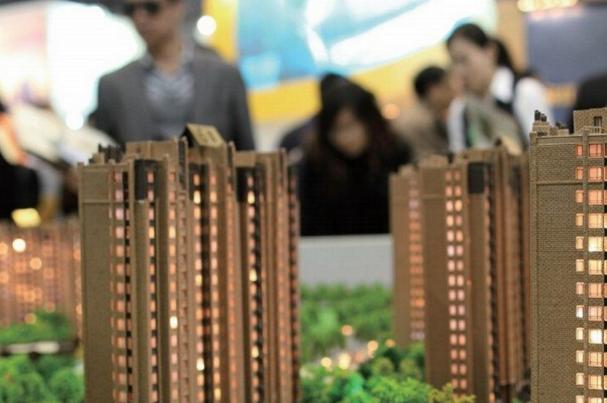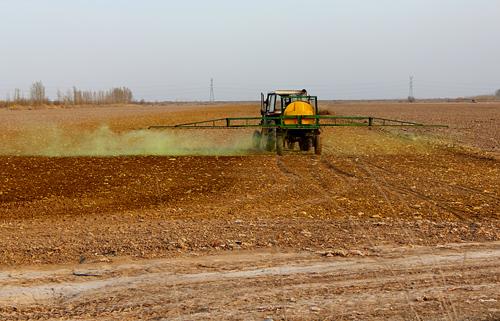Anhui real estate market goes to storage and invites farmers to withdraw from homestead with a prize of more than 50,000 yuan per mu

◎ every reporter Zha Daokun
As the capital of Anhui Province, Hefei has recently become the focus of the hot property market. With the exception of Hefei, most other cities in Anhui are facing slow sales and top inventory.
On the evening of June 22, the Anhui provincial government formally issued the "implementation opinions on destocking to promote the stable Development of the Real Estate Market" (hereinafter referred to as "opinions"), requiring Hefei to stabilize the property market and control house prices rising too rapidly. the focus is on the destocking of non-residential commercial housing.
The above-mentioned "opinions" also clearly pointed out that it will take about three years to remove 25 million square meters of commercial housing inventory in Anhui Province. By 2020, Anhui Province will achieve a basic balance between supply and demand, housing prices will be basically stable, and the potential risks of the market will be effectively controlled.
A reporter from the Daily Economic News noted that in order to encourage farmers to go to cities to buy houses, the "opinion" proposed that the county government should reward those who voluntarily return the homestead at no less than 50,000 yuan per mu.
Farmers withdraw from the homestead to enjoy the reward
At present, it is easy to get rid of inventory in first-and second-tier cities, but it is more difficult in the third, fourth and fifth line. With the exception of Hefei, the provincial capital, which belongs to second-tier cities, the other cities in Anhui belong to third-and fourth-tier cities. How to resolve the inventory of the property market has become a difficult problem in front of Anhui.
In this "opinion", Anhui explicitly encourages farmers to go to the city to buy houses. Among them, the county government shall reward those who voluntarily return the homestead to rural collective economic organizations at a rate of not less than 50,000 yuan per mu. For those who voluntarily withdraw from the homestead and are reclaimed into cultivated land or other agricultural land and contracted by the original users of the homestead, the county government shall give a reward of not less than 30,000 yuan per mu.
At the same time, Anhui Province will establish a loan risk-sharing mechanism between banks and guarantee institutions, and the government of the place where houses are purchased will purchase guarantee services from guarantee agencies for housing loans for farmers in cities.
According to the target set by Anhui Province, the urbanization rate of the registered household population will reach 35 percent by 2020, and about 9 million of the transferred agricultural population will be settled by 2020, according to the Anhui Market Star. If this goal is achieved, it will undoubtedly play a stimulating role in the de-inventory of the property market.
Zhang Jianchu, an expert in the real estate industry, said, "after entering the city, farmers will face problems such as employment and social security. If these problems are not solved, they will only rely on an one-time reward for withdrawing from homestead, which is not very attractive to farmers."
Guide developers to sell at reduced prices
Housing price is also a key factor in the process of destocking. The above-mentioned "opinions" require that the supply management of commercial housing will be strengthened, and real estate development enterprises will be guided to adjust their marketing strategies and appropriately reduce commercial housing prices.
Among them, Anhui will gradually improve the pre-sale conditions through the land transfer contract, and the commercial housing built by the new real estate development land will gradually transition to on-the-spot sale. At the same time, strengthen the qualification and credit examination of bidders for real estate development land.
In addition, the "opinion" also said that institutional investors will be encouraged to invest in rental housing and support real estate development enterprises to change their investment mode from commercial housing sales to both sale and rent. At the same time, where the supply of real estate is obviously too large or the scale of real estate land under construction is too large, the relevant departments shall study and formulate a conversion plan for the use of undeveloped real estate land, by adjusting land use and planning conditions, guide the transformation and utilization of undeveloped real estate land.
It is worth noting that Anhui has also adjusted the land value-added tax. According to the current regulations, the land value-added tax for real estate development projects shall be levied in advance, liquidated later, more refunded and less compensated, and the provinces in the central and northeast regions shall not be less than 1.5%. All localities should impose a low withholding rate of 1.5% on land value-added tax on ordinary standard housing and fully decorated housing. For prefabricated buildings and green buildings, if the withholding rate of land value-added tax exceeds 1.5%, it shall be reduced by 0.2 percentage points respectively on the basis of the current rate.
Plan to remove 25 million square meters in three years
The ultimate goal of the above series of policies is to reduce inventory in the property market. The "opinion" is clear that it will take about 3 years to remove 25 million square meters of commercial housing inventory in Anhui Province. By the end of 2018, the removal cycle of commercial housing in Anhui province will be controlled within 15 months, and that in each district will be controlled at about 18 months. By 2020, we will achieve a basic balance between supply and demand, house prices will be basically stable, and potential risks in the market will be effectively controlled.
Data previously released by the Anhui Economic Information Center show that without considering the area of land to be developed and the new construction and short-term housing sales before 2005, Anhui's real estate inventory area reached 328.442 million square meters in the first 10 months from 2005 to 2015. according to the sales area of commercial housing in the province in 2014, it will take 5.3 years to digest. Among them, the inventory area of commercial housing is 188.863 million square meters, which takes 3.5 years to digest according to the sales area of commercial housing in Anhui province in 2014.
For the specific urban removal time, the removal cycle of commercial housing in Suzhou, Bozhou and Fuyang is 3.4 years, 5.2 years and 5.2 years respectively, that in Anqing is 4.4 years, that in some cities such as Chuzhou and Wuhu is 7 to 9 years, and some are even more than 10 years. The pressure of destocking is great.
A manager of Evergrande Real Estate Anhui Company surnamed Li told the Daily Economic News, "compared with last year, real estate sales in third-and fourth-tier cities in Anhui have improved, but with the exception of Hefei, inventory pressure is still great in other cities."
The inventory schedule released by the Anhui provincial government shows that in the next three years, the inventory task of Wuhu de-chemical commercial housing is 4.587 million square meters, that of Chuzhou is 4.603 million square meters, and that of Bengbu is 4.56 million square meters.
In the view of Ling Bin, vice president of Hefei Real Estate Research Institute, Anhui has also introduced some policies to remove inventory before, but the effect is not obvious. "the opinion issued this time is in fact a re-emphasis on the previous policy. It may not play a big role in stimulating buyers to buy a house, so it is difficult to achieve the goal."
Related
- A course of planting techniques and methods on how to grow carrots
- How to plant the latest tulips?
- Is it better to pick tea in the morning or in the afternoon? When is the best time for tea to be picked? what is the third or fifth tea?
- Launch Yuanxiao Happy combination Haocha + Tea Yuan healthy Taste
- Penghu Tourism "Fireworks 20 Parade with You"
- 2022 West Lake Happiness holds "Digital Revitalization Voucher" and draws iphone13 and laptop.
- Banqiao Fuzhou social houses are designed to change start-up combined with police elimination to create a safe and livable environment
- The convenient measure of "mechanical weeding" in Xinbei has been abused and the Agriculture Bureau has imposed heavy penalties on the illegal land consolidation.
- Changgeng University Joins Hands with Four Memory Factories to Rescue Memory Talent Shortage
- The list of Taiwan's top 100 MVP managers is listed by the Director-General of the Farmers' Association of Sanxia District.



